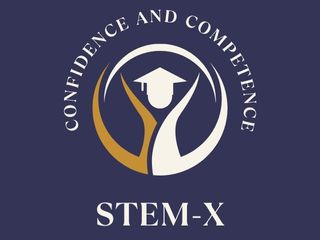
Hands-on learning
STEM-X classes place a strong emphasis on experiential, hands-on learning that enables students to interact directly with STEM ideas and resources. This can range from creating robots and writing code to carrying out experiments and creating answers to real-world issues.

Project-based approach
Students in STEM-X programs typically work on a project from start to completion using a project-based approach. As they face difficulties and overcome them to finish their tasks, this aids in the development of their critical thinking and problem-solving abilities.

Interdisciplinary focus
In STEM-X programs, students can investigate the connections between various STEM fields using an interdisciplinary strategy. This can assist them in understanding how STEM ideas can be applied in various settings and inspire them to come up with innovative solutions to challenging issues.
Read Our Latest Blogs
We ARE STEM-X
We are a STEM-X education initiative that is committed to giving students practical science, technology, engineering, and math learning opportunities. Our goal is to develop the critical thinking, problem-solving, and collaboration skills of the next generation of STEM leaders through intensive, project-based learning. Our interdisciplinary approach encourages students to investigate the connections between various STEM disciplines and come up with original solutions to problems encountered in the real world. To give our students the best learning experience possible, we continuously adapt to new technologies and pedagogical approaches in order to remain innovative and cutting-edge.
SPARK PASSION
Students can develop a sense of ownership and pride in their work through STEM-X programs that provide chances for creativity and innovation, which can further stoke their passion for STEM.
BUILD CONFIDENCE
When students collaborate on tasks, they are able to learn from one another and encourage one another, which can help them feel more confident and better about themselves.
INSPIRE ACTION
STEM-X programs can help students see themselves as active agents of change and motivate them to pursue their own solutions to real-world issues by giving them the chance to create their own ideas and products.
Read Our Articles
Mechanics and Engineering: The Science Behind Garage Door Repair and STEM Education
Beyond serving as a practical doorway into our houses, garage doors have many other uses. They are proof of the mechanics and engineering concepts that guarantee their dependability and efficient operation. A remarkable fusion of science, technology, engineering, and mathematics (STEM) lies behind every successful garage door repair. We will examine the fascinating connection between STEM instruction and garage door repair in this essay, emphasizing the ways in which these two fields interact and motivate the subsequent wave of innovators.
How Garage Door Repair Works Scientifically
Mechanics and engineering principles are essential to the operation of garage doors, which are intricate systems. Garage door repair is a science in and of itself, from the complicated systems that enable smooth opening and shutting to the exact calculations that establish the necessary force and torque. We can better grasp the mechanisms that underlie these commonplace technologies if we comprehend the fundamental ideas of STEM.
Garage Door Maintenance and Mechanics
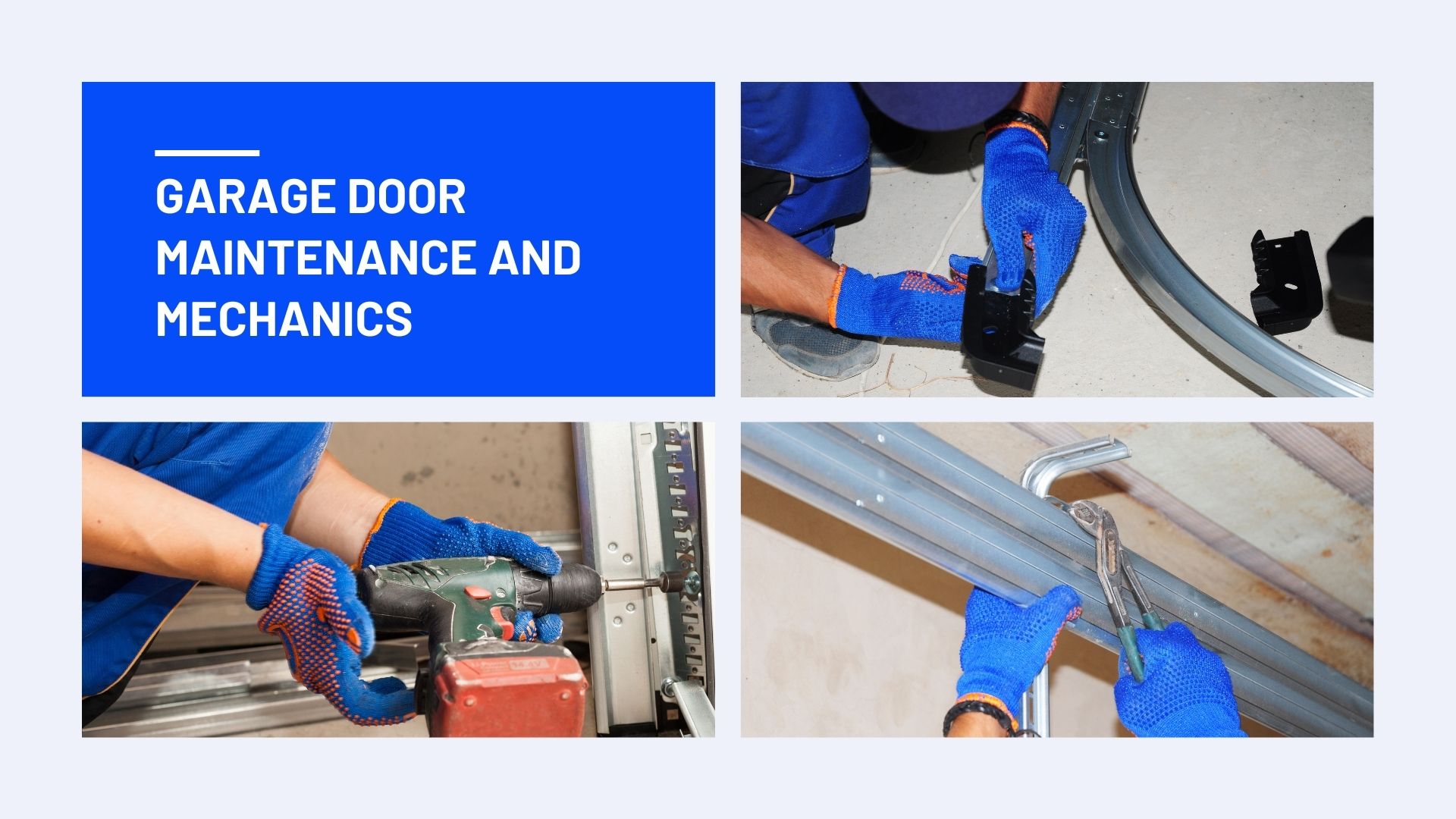
a. Forces at Play: The tension, compression, and gravity that are at work during a garage door’s functioning are only a few of the forces that are at work. To guarantee that the door performs securely and smoothly, garage door repair specialists need to have a firm grasp of these pressures. Through the use of their mechanical expertise, they can recognize and resolve problems with unbalanced springs, out-of-place tracks, or damaged cables, regaining the door’s optimal performance.
b. Torque and Power: The rotating force produced by the garage door opener, known as torque, is what moves a garage door. In order to identify and resolve problems with the motor, gears, or drive system, garage door repair technicians use their knowledge of torque. By using their knowledge of engineering concepts, they can maximize the power output and efficiency of the garage door opener, leading to a dependable and energy-efficient functioning.
Designing Garage Doors and Using Engineering
a. Structural Integrity: Garage doors are made to withstand a variety of external factors, such as wind, temperature fluctuations, and impacts. a. Structural Integrity. Selection of materials, methods of reinforcement, and weight distribution are all factors that must be taken into account during the design and construction of garage doors. In order to guarantee that the door is structurally solid and can endure the test of time, garage door repair specialists use these engineering concepts.
b. Safety Systems: Over the past few years, garage door safety systems have undergone tremendous progress. These systems include sensors, auto-reverse mechanisms, and emergency release features to shield users from mishaps or becoming trapped. Installing, maintaining, and repairing these safety systems are critical tasks performed by garage door repair professionals at Danville, CA, who use their engineering expertise to guarantee the highest level of safety for homeowners.
Future Garage Door Repair: STEM Education
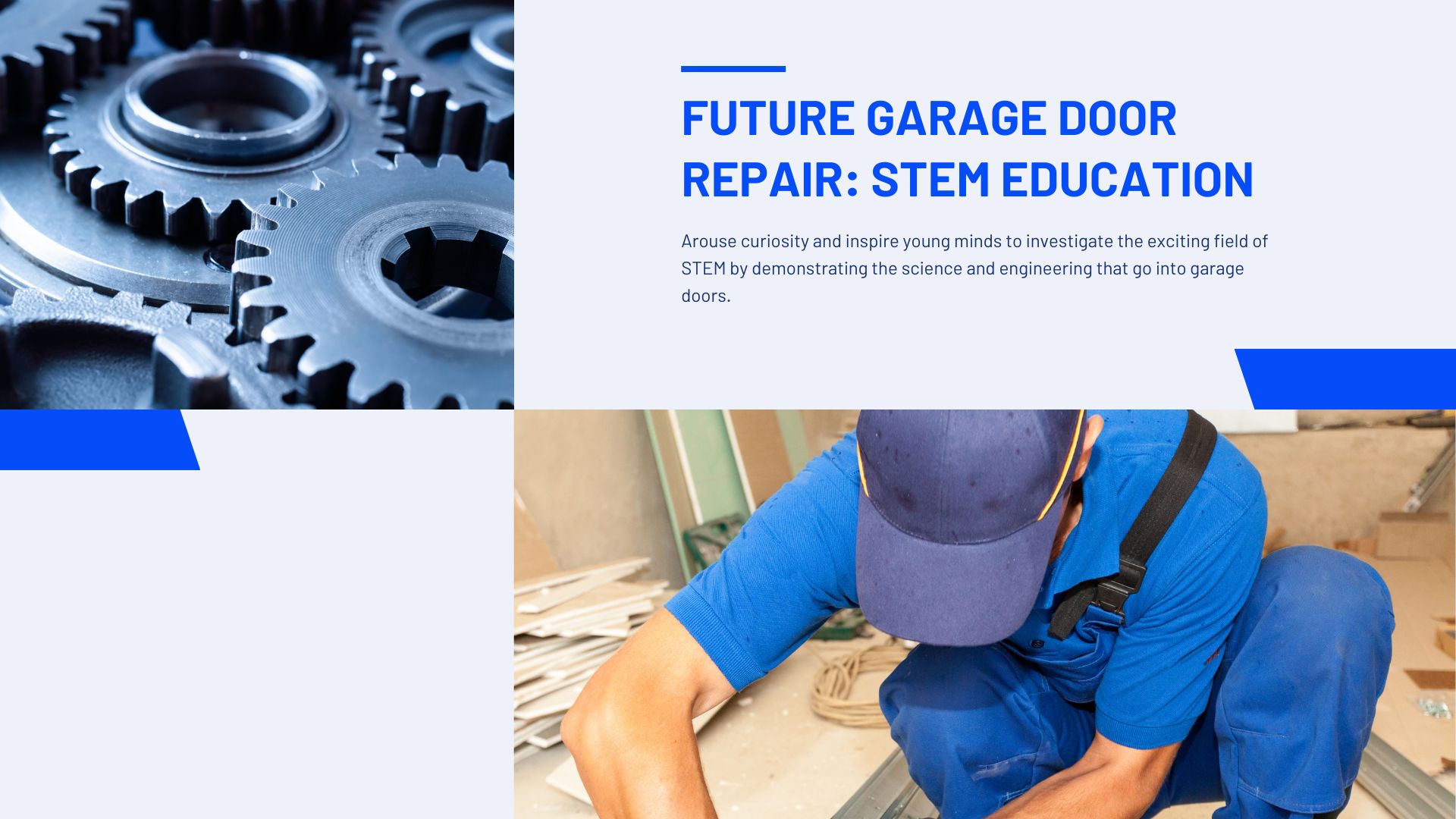
a. Motivating Up-and-Coming Innovators: The nexus of STEM education and garage door maintenance presents a rare chance to motivate the following generation of innovators. We can arouse curiosity and inspire young minds to investigate the exciting field of STEM by demonstrating the science and engineering that go into garage doors. Students who are interested in mechanics, engineering, and problem-solving may be inspired by practical exercises, workshops, and educational initiatives that incorporate garage door repair concepts.
b. Job Possibilities: Those interested in STEM have a variety of job options in the field of garage door repair. The skills and information acquired through the study of STEM topics can open doors to a wide number of professional pathways, including pursuing jobs in mechanical engineering or industrial design. We can recruit more talent to these sectors and help the business develop by emphasizing the rewarding job opportunities in garage door repair.
Conclusion: The Science Behind Garage Door Motion
It takes a complex fusion of mechanics and engineering principles to repair a broken garage door; it involves more than just mending the door. We can gain a deeper comprehension of garage doors’ internal mechanisms and a greater appreciation for the contributions that STEM education has made to the sector by exploring the science underlying garage doors. Professionals that repair garage doors have knowledge and skills that are based on the principles of science and technology, from mechanics and forces to engineering design and safety systems. We can provide the foundation for upcoming advancements in garage door repair and other industries by fostering a passion for STEM education and promoting exploration in these fields.
Opening Doors to Opportunity: Garage Door Technology Enhances STEM-X Education
STEM-X education is essential for educating students for the difficulties and possibilities of the future in a society that is becoming more and more technologically oriented. A surprising ally in the fight for practical, hands-on learning opportunities for students has emerged: garage door technology. STEM-X programs are opening doors to a world of scientific inquiry and technical creativity by utilizing the potential of these commonplace processes.
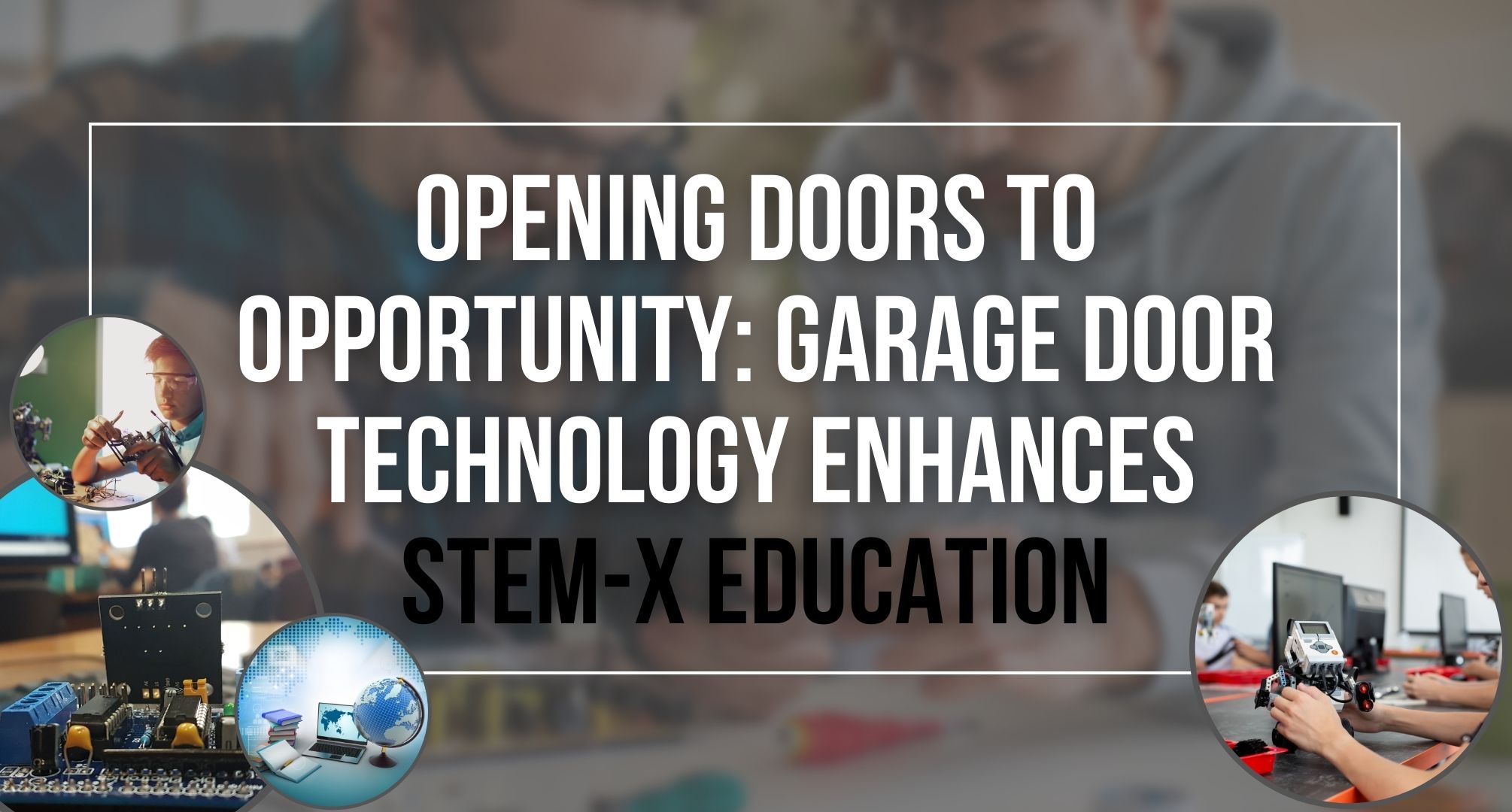
A variety of mechanical and physical concepts are used in the intricate systems that make up garage doors, which are more than just functional entries to our houses. Students are given an introduction to the fundamentals of engineering by studying the mechanics of garage doors. Garage doors provide a concrete means for children to comprehend how simple machines and mechanics work together to accomplish a bigger goal, from pulley systems to leverage and force distribution.
Students can investigate the concepts of force, motion, and energy transfer to delve deeper into the mechanics underlying garage door action. Students develop understanding of ideas like potential and kinetic energy as well as the conservation of energy by investigating the forces involved in opening and shutting a garage door. They can quantify and analyze the physical forces at work through realistic experiments and measurements, offering a useful application of physics concepts in actual situations.
Beyond mechanics and physics, garage door technology offers a great chance to learn about engineering, especially as it relates to safety measures. Numerous safety elements on garage doors are intended to shield users from mishaps and harm. Students can learn about engineering design and problem-solving by examining these safety measures. The workings of sensors, automatic reversing systems, and emergency release mechanisms can all be investigated. Students learn firsthand about engineering solutions that promote user safety through activities that entail developing and building model safety systems for garage doors.
Automation and control systems are also crucial components of contemporary garage door technology. Students that investigate these topics gain knowledge of cutting-edge engineering principles as well as hone their programming and control theory abilities. Students can learn about the many sensors, motors, and control algorithms utilized in garage door systems by comprehending the fundamentals of automation. They can design and build their automated garage door systems by delving into programming languages and logic. These practical assignments give students a special chance to connect theory with application while encouraging innovation and originality.
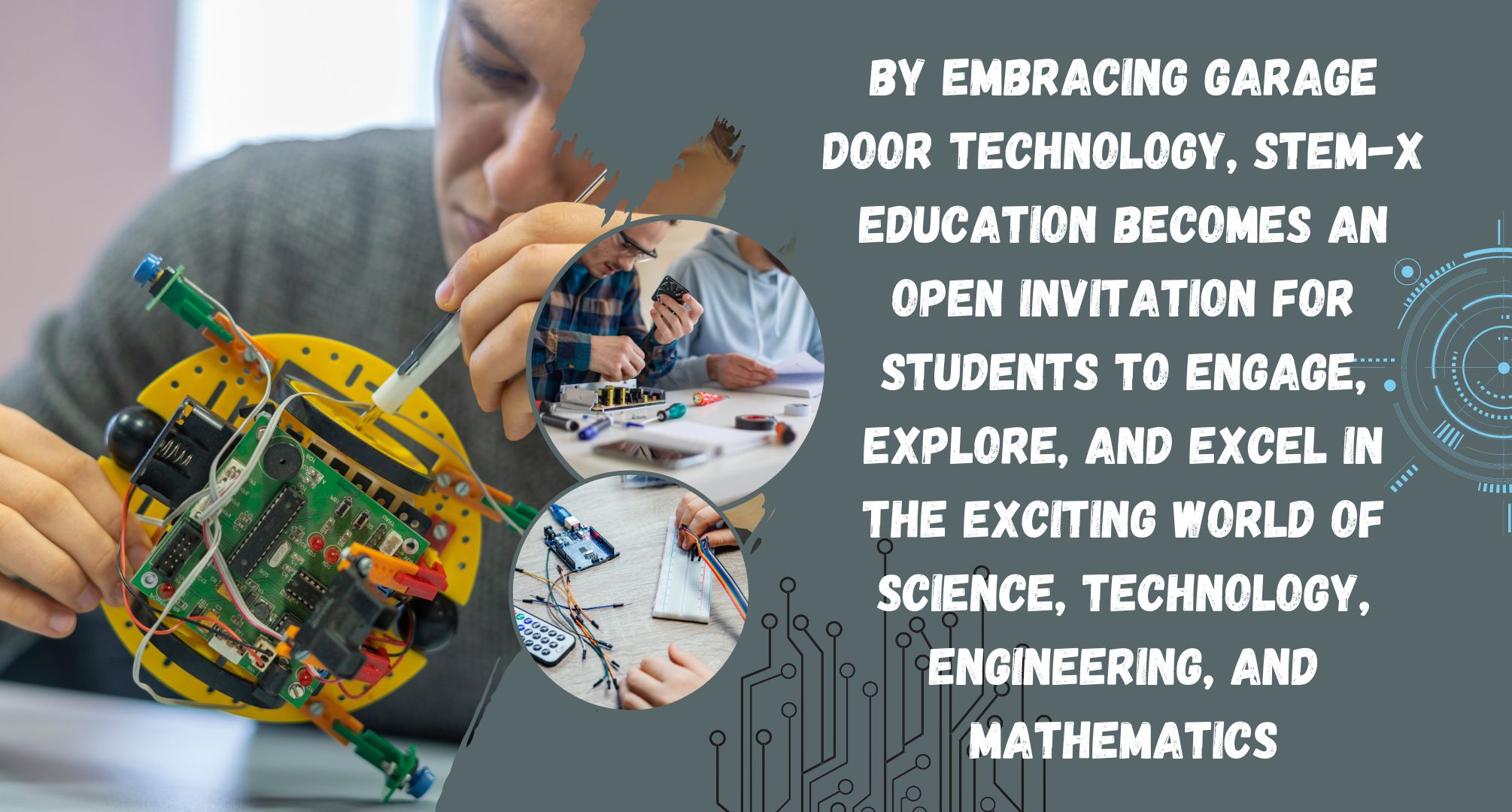
Students have a ton of possibilities to solve problems with garage door technology. Students can take on practical issues with garage door systems, such as increasing safety features and boosting economy. STEM-X education gives students the tools they need to become active problem solvers by challenging them to think critically and come up with creative solutions. These encounters create self-assurance and resiliency in children, giving them useful abilities that go far beyond garage doors.
The collaborative environment it promotes is one of the great benefits of using garage door technology into STEM-X education. Projects involving garage doors naturally encourage collaboration and communication. In order to accomplish a common objective, students are urged to collaborate and pool their knowledge, abilities, and ideas. Effective communication, teamwork, and the division of labor are encouraged through collaborative projects involving the design, building, and troubleshooting of garage door mechanisms. These experiences are a reflection of the teamwork-intensive engineering contexts found in real-world settings.
Beyond the classroom, garage door technology has an impact on STEM-X education. It encourages kids to consider jobs in engineering, robotics, and related industries. Students may visualize the possibilities that lie ahead by showcasing the real-world uses of garage door technology and emphasizing the achievements of creative people. A great example of how STEM education enables people to pursue interesting job choices and has a positive impact on society is garage door technology.
Teachers may stimulate students’ enthusiasm for learning and equip them to become self-assured problem solvers and innovators by introducing garage door technology into STEM-X instruction. Working with garage doors is both practical and relevant, giving students a concrete link to the outside world and enhancing the impact and engagement of STEM education.
Additionally, because to garage door technology’s adaptability, teachers may create projects and activities that are appropriate for students of all ages and skill levels. The opportunities for incorporating garage door technology into STEM-X curricula are endless, ranging from elementary school students investigating fundamental mechanics to high school students programming automated garage door systems. Due to its versatility, garage doors enable students of diverse backgrounds and interests to take use of their special learning opportunities.
Additionally, garage door technology supports the objective of establishing a welcoming and inclusive learning environment. Due to the fact that garage doors are a common sight in most communities, regardless of financial class, it dismantles barriers and levels the playing field. Garage door technology can be used into STEM-X education to provide all students with access to practical learning opportunities and help them to build critical STEM skills.
Collaboration between educators, business leaders, and the community is essential to fully realize the potential of garage door technology in STEM-X education. Working together with garage door producers, nearby companies, and subject-matter experts can give students access to useful resources, mentorship, and real-world context. Students can learn about business processes, consider potential career paths, and get a sense of how their STEM education will affect society as a whole by making these connections.
As a result, garage door technology has become a surprising yet effective tool for advancing STEM-X teaching. Students can cultivate critical thinking abilities, creativity, and a passion for STEM by utilizing the mechanics, physics, engineering, automation, problem-solving, and teamwork components of garage doors. Garage door technology helps pupils get ready for the challenges of the twenty-first century and opens doors to interesting prospects.
Let’s embrace the possibilities of garage door technology in STEM-X education as we work to develop each student’s potential and motivate the upcoming generation of STEM professionals. Together, we can open up a world of opportunities and provide students the information, know-how, and attitude they need to succeed as leaders and innovators in the STEM disciplines. The garage door is a gateway to countless opportunities for achievement, learning, and growth. It serves as more than just a physical entrance.
Unlocking the Mystery: Why Aren’t Students Enamored with STEM Despite Tech Billionaires’ Success?
STEM, the superhero squad of science, technology, engineering, and mathematics, has been saving the world one innovation at a time. They are like the Justice League for progress! With each breakthrough or discovery in STEM fields, we get closer to utopia – a better place to live in. As they say: “No pressure team!” But seriously though, folks, as our global community becomes more tech-savvy and advanced, America’s economic power and leadership will rely on its workforce being armed with these skills. As such, motivating students to pursue STEM education should be a national priority. STEM education is vital for scientific innovation, technological advancement, economic development, global competitiveness, and solving complex societal challenges.
Research has shown that students are more likely to select STEM careers during their first years of undergraduate education. To improve their retention, especially for underrepresented students, STEM education must start at an early age. Therefore, it is crucial to develop a STEM motivation guide for students in grades K-12. This guide should introduce students to STEM, engage them with interactive learning experiences, and expose them to role models working in STEM fields.
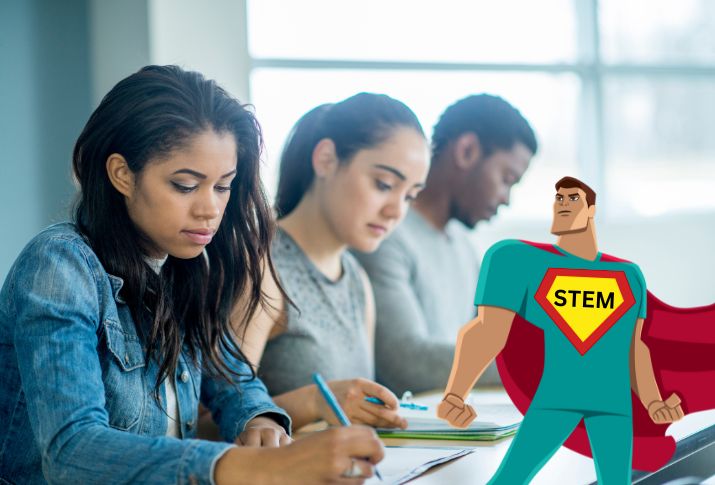
The current deficit in the quality and quantity of K-12 STEM education in the U.S. is particularly detrimental to minority students, who often do not have access to or do not choose to take STEM-related courses. This non-participation at the K-12 level is attributable to various factors, including under-trained teachers. These teachers often need to be adequately prepared to teach students modern trends in engineering and science.
Why STEM Remains Unpopular Despite Popular Tech Giants Made a Fortune with These Careers?
STEM careers have gained significant attention in recent years as numerous individuals aspire to join the ranks of scientists, engineers, and data scientists. Prominent figures such as Steve Jobs, Bill Gates, Mark Zuckerberg, and Elon Musk have risen to prominence as technology giants, further advocating for STEM education. Despite this, a conspicuous lack of interest persists among young students. The lack of motivation can be attributed to a multitude of factors, encompassing individual experiences, socio-cultural context, and the very structure of educational systems. Key contributing reasons include:
- Lack of exposure: Many students may need more exposure to STEM subjects, role models, or career opportunities in their early years. Without role models they can emulate can limit their understanding of STEM careers’ potential benefits and exciting aspects.
- Stereotypes and biases: There are prevalent stereotypes about STEM careers, such as being predominantly male-oriented or only suited for exceptionally intelligent individuals. These stereotypes can create barriers for students, particularly for underrepresented groups like women and minorities.
- Perceived difficulty: STEM subjects are often perceived as more challenging than other subjects. Young students may be intimidated by the complexity of these subjects and may need more confidence or support to pursue them.
- Limited resources: In some schools, there may be a need for more quality teaching, materials, or resources dedicated to STEM education. This can lead to students feeling disengaged or unsupported in their learning.
- Curriculum and pedagogy: Traditional teaching methods and curricula must be more engaging to capture young students’ interest. Innovative, hands-on, and project-based learning approaches can more effectively foster interest in STEM subjects.
- Competing interests: Young students have a wide range of interests, and influencer role models may draw students to fields such as arts, humanities, or social sciences. It’s essential to provide diverse learning opportunities and help students see the connections between different areas.
- Lack of awareness: Some students may need to fully understand the range of STEM careers available and the potential benefits, such as job stability, career growth, and competitive salaries.
Efforts to address these issues, such as providing more engaging STEM learning opportunities, promoting positive role models, and addressing stereotypes, help increase interest in STEM careers among young students.
How to Lure Students to STEM Education
To address the current deficit in the quality and quantity of K-12 STEM education, focusing on providing equal access and opportunities for all students should be the priority. The direction includes addressing the aforementioned contributing factors that limit participation in STEM education, particularly for underrepresented groups. The effective method is early exposure to fundamental aspects of science at the elementary or middle school levels. Engaging, hands-on learning experiences in STEM subjects can help young students develop an interest and passion for these fields. Additionally, promoting positive role models representing diverse backgrounds and career paths can counteract harmful stereotypes perpetuating gender or racial bias among students.
Curriculum and pedagogy should be flexible, innovative, and inclusive to cater to diverse student interests and learning styles. Qualified and well-trained teachers passionate about STEM can also significantly engage students in these subjects.
Efforts should also be made to increase awareness of the diversity and range of STEM careers available, including those in emerging fields such as data science, artificial intelligence, and robotics. These fields offer stable, high-paying jobs crucial for driving innovation and solving real-world problems.
Schools should also promote inclusivity and diversity in STEM education, recognizing that every student has unique strengths and interests. They should strive to provide equitable access and opportunities for all students, regardless of their background or identity. Incorporating engineering design and design habits of mind into K-12 STEM education has been proven to be an effective method for motivating students to enroll in advanced STEM courses and pursue careers in these fields. Also, starting to welcome students with disabilities by investing in commercial wheelchair ramps around the campus can help promote inclusivity in STEM education.

In conclusion, improving K-12 STEM education is essential for cultivating a diverse, skilled workforce and addressing real-world challenges with science-based solutions. By addressing these contributing factors that limit participation in STEM education and implementing the effective methods mentioned, we can encourage more students to pursue STEM careers. The declining STEM participation and achievement rates amongst children in K-12 educational settings is a global concern, particularly among minority students. We can address these challenges by implementing strategies such as early exposure to science, flexible and inclusive pedagogy, qualified teachers, promoting positive role models and awareness of diverse career opportunities, and incorporating engineering design practices into the curriculum. Moreover, schools should prioritize fostering a love of learning and curiosity in STEM subjects from an early age and highlighting the diversity and range of STEM careers available, including those in emerging fields such as data science and artificial intelligence.
Furthermore, schools should prioritize investing in resources and technology that enable students to explore STEM subjects through hands-on experiences. This can include providing access to 3D printing, coding, robotics workshops, virtual reality simulations, and other emerging technologies. Overall, it is vital to recognize the importance of addressing the challenges faced in STEM education by providing equitable access and opportunities for all students and prioritizing diversity, inclusion, and accessibility.
Tech billionaires may have captured the public’s imagination, but their success has yet to convince students to pursue STEM careers. To truly inspire the next generation, we must address the root causes of disinterest, such as lack of exposure, stereotypes, perceived difficulty, and limited resources. By providing engaging, hands-on learning experiences, promoting positive role models, and fostering inclusive and innovative educational environments, we can spark curiosity and encourage more students to embrace the world of STEM. Ultimately, it’s not just about creating more tech giants—it’s about cultivating a diverse, skilled workforce that can drive innovation and tackle the complex challenges of the future.
STEM-X Learning Takes on Home Improvement: Students Showcase Projects
With the help of hands-on science, technology, engineering, and math learning opportunities, the STEM-X education initiative seeks to foster in students a critical thinking, problem-solving, and collaboration mindset. This ground-breaking program can be used for a variety of real-world situations, including house improvement tasks. In this piece, we will highlight some of the outstanding projects that students who took part in the STEM-X program accomplished, emphasizing the positive effects of STEM-X learning on home improvement abilities.
Overview of STEM-X Learning Tasks for Home Improvement
Students who took part in the STEM-X program were assigned a variety of home improvement tasks that called for them to use their STEM expertise. Among the initiatives were the development of an eco-friendly plumbing system, a smart home system, and a solar-powered exterior lighting setup. By encouraging students to look into the relationships between different STEM disciplines and develop original solutions to problems in the real world, STEM-X learning was incorporated into these projects.
Student Exhibition of Home Renovation Work
The STEM-X program’s participants were able to exhibit their impressive projects, which highlighted the importance of STEM-X education for home improvement. One group of students created and assembled a smart house system that used automation and sensors to regulate the lighting, temperature, and security features. Any home can use the system because it was made to be readily scalable and adaptable. Another set of students designed an eco-friendly plumbing system that used both a rainwater collection and reuse system for greywater. The method was created to encourage sustainability and decrease water use.
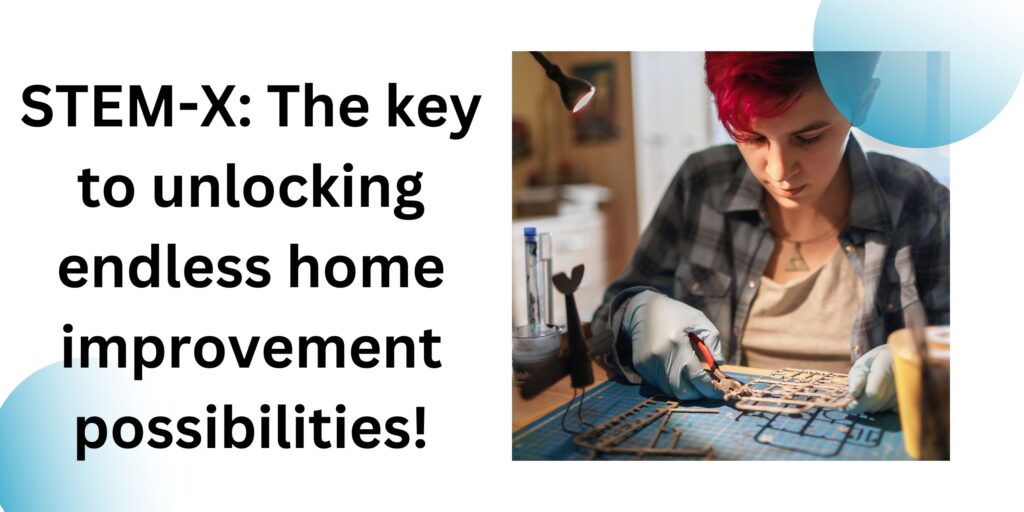
STEM-X Education’s Effect on Home Improvement Abilities
The students who took part in the STEM-X program have seen a significant improvement in their home improvement abilities. Students gained the critical thinking, problem-solving, and teamwork abilities necessary for effective home improvement projects by working on these projects. Students were also able to connect various STEM subjects and apply them to DIY projects thanks to the interdisciplinary nature of STEM-X learning.
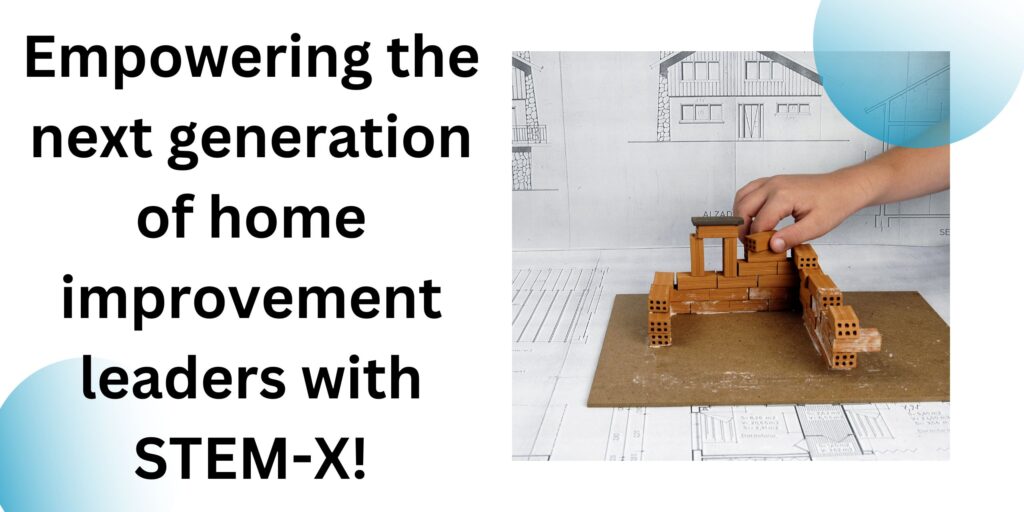
Conclusion
It has been demonstrated that STEM-X education is a powerful tool for generating original ideas for DIY tasks. The course has given students chances for hands-on learning that have helped them acquire crucial abilities that will help them in their future careers. The success of the projects featured in this piece shows how STEM-X education has the potential to completely transform the home improvement sector.
The STEM-X learning approach provides a cutting-edge and entertaining way to learn that integrates several subjects and enables students to gain a deeper grasp of their environment. Students are able to see the practical application of their learning when STEM topics are integrated into real-life scenarios, such as home improvement projects, which makes learning more meaningful and applicable to everyday life.
Additionally, STEM-X learning can be customized to fit various learning preferences, offering an adaptable and individualized approach to education. For instance, some students might favor hands-on learning, whereas others might favor a more theoretical strategy. While the theoretical components of STEM-X learning offer a solid foundation for comprehending challenging concepts, the hands-on nature of STEM-X learning enables students to participate in practical tasks and experiments.
Additionally, STEM-X learning develops abilities outside of just the STEM fields. In every aspect of living, critical thinking, problem-solving, and collaboration skills are important. Students can develop these skills in a variety of settings thanks to the interdisciplinary nature of STEM-X learning, putting them in a successful position for their future professional and personal lives.
The success of the projects featured in this piece shows how STEM-X education has the potential to completely transform the home improvement sector. With the growth of eco-friendly products, sustainable practices, and smart home technology, there is an increasing demand for people with a strong background in STEM areas who can use their skills in home improvement projects.
The next generation of STEM leaders is largely shaped by STEM-X education efforts like the ones this article highlights.
We can encourage students to pursue careers in STEM fields and develop into creative problem-solvers who help improve the state of society by giving them real-world, hands-on learning chances.
In conclusion, the STEM-X learning strategy is a successful way to encourage students’ creativity and innovation while also giving them the skills they need to succeed in both their personal and professional lives. Only a few of the amazing projects that students can complete through STEM-X learning are shown in this piece. We can anticipate even more exciting and significant initiatives in the future as we continue to adapt to new technologies and pedagogical methods.
STEM-X: Igniting Passion for Science and Technology Among Students!
In the quickly changing technological environment of today, STEM education is more critical than ever. The demand for qualified professionals in science, technology, engineering, and mathematics (STEM) areas is on the rise as new innovations and technologies continue to be developed. However, many students find STEM topics intimidating and may fail to recognize the relevance or influence of these fields in the real world. STEM-X can help in this situation.
STEM-X is a cutting-edge educational initiative that aims to inspire students’ interest in STEM fields by offering immersive, practical learning opportunities that place an emphasis on creativity, teamwork, and problem-solving. Our programs are created to give students a thorough grasp of STEM concepts while also assisting them in acquiring the abilities and mindset necessary to be successful in these fields.
Our project-based method of instruction is one of STEM-X’s distinguishing qualities. Instead of simply instructing students on STEM concepts, we arm them with the resources and tools they require to take on real-world issues and come up with creative solutions. Students benefit from this hands-on method in that it helps them develop critical thinking and problem-solving skills, which are crucial in STEM fields and beyond. It also makes STEM subjects more interesting and relevant for them.

Our multidisciplinary approach to STEM-X is another crucial component. Our educational initiatives urge students to investigate the relationships between various STEM specialties and to consider how ideas from one field can be used in another. This encourages students to think creatively and innovatively about solutions to challenging problems while also fostering in them a wider grasp of STEM subjects.
We at STEM-X are dedicated to offering students from all backgrounds and experiences a welcoming and inclusive learning atmosphere. We are committed to assisting students in realizing their full potential through our programs because we firmly believe that everyone has the potential to thrive in the STEM disciplines.
A campaign to motivate the following generation of STEM leaders and innovators, STEM-X is more than just an educational initiative. We want to make the future better for everyone by igniting pupil interest in STEM fields. So come join us at STEM-X if you want to experience the enchantment of learning that comes to life while exploring the fascinating world of STEM!
